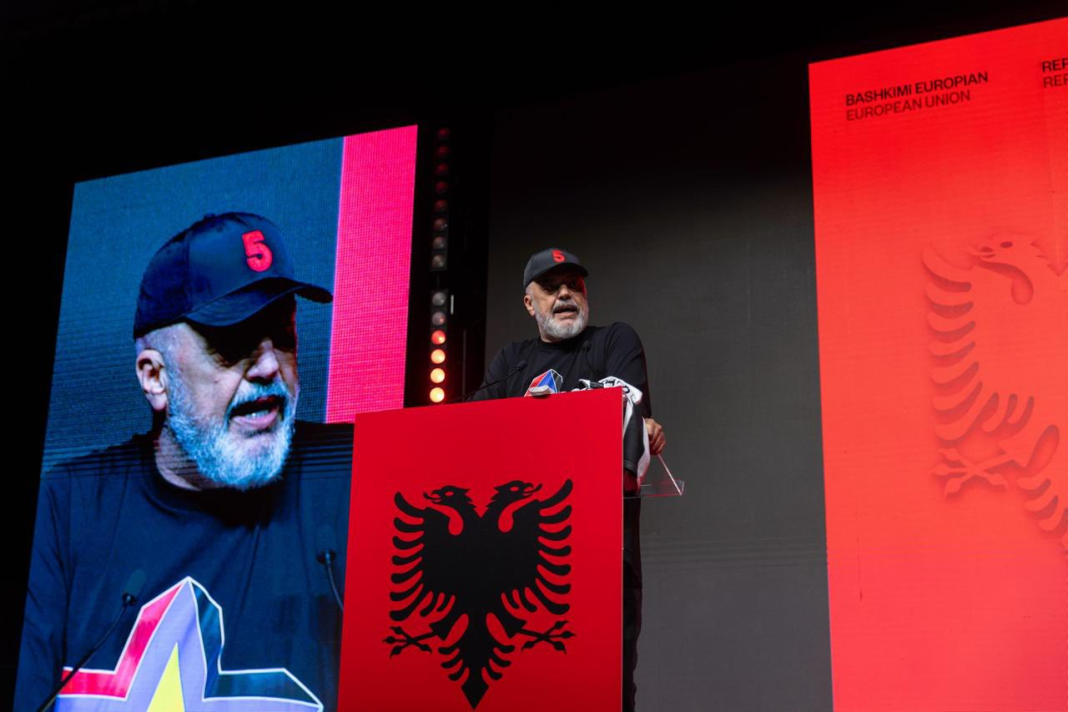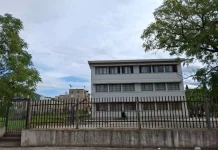Jona Plumbi
The Prime Minister of Albania, Edi Rama, claimed at the beginning of his electoral campaign that his government has built 450 schools.
‘We have built 450 schools, benefiting 200,000 students who now attend schools that are fully equipped, not all schools in the European Union, but some of the best schools in the European Union’, the Prime Minister said during a public event.
At first glance, this statement might suggest a radical transformation in the country’s educational infrastructure. However, as is often the case with numbers, they need to be supported by solid facts. When Faktoje sought confirmation from the Ministry of Education, the situation turned out to be far less ‘solid’.
What does the data show
According to official data from the Ministry of Education, in 2013, the total number of public pre-university educational institutions was 1,741. By 2023, that number had dropped to 1,378. This means a reduction of 363 schools over the past ten years. So, there hasn’t been an increase in schools, nor has there been the construction of 450 new schools.
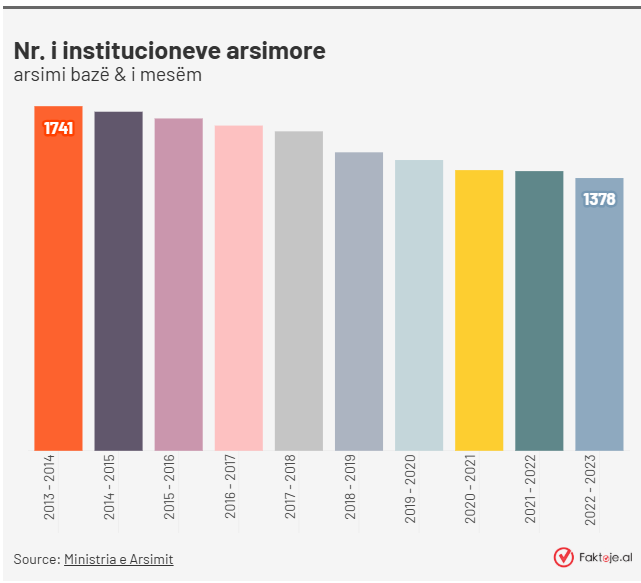
As for public universities, their number has remained unchanged: 15. Not one more, not one less. It seems that higher education wasn’t part of the construction agenda.
It’s essential to clarify that when the government refers to ‘built schools’, in the best-case scenario, this refers to schools that were demolished and completely rebuilt. In the worst-case scenario, it refers to wall plastering and minor repairs to courtyards or gymnasiums.
Based on the data from the Ministry of Education and processed by Faktoje, between 2014 and 2024, only 43 schools were rebuilt or expanded. This averages to about 3 schools per year, which feels more like seasonal maintenance rather than an educational revolution.
Additionally, during this period, various interventions have been carried out in 245 other schools, which include internal work, facade reconstructions, etc. Of these, 68 also include sports fields or gyms. In 43 schools, only sports fields have been intervened.
In total, if we consider all interventions, even those affecting only the courtyards or gyms, the number reaches 331. It is important to emphasize that a huge portion of the interventions were made in the same schools, meaning that 331 refers to the interventions in schools, not 331 different schools where work has been done.
The Reconstruction Program, initiated after the 2019 earthquake, also plays a role. As part of this, 125 schools have been rebuilt or rehabilitated, but 43 of them were built by the EU through the EU4Schools program, and only 82 by the Albanian government itself.
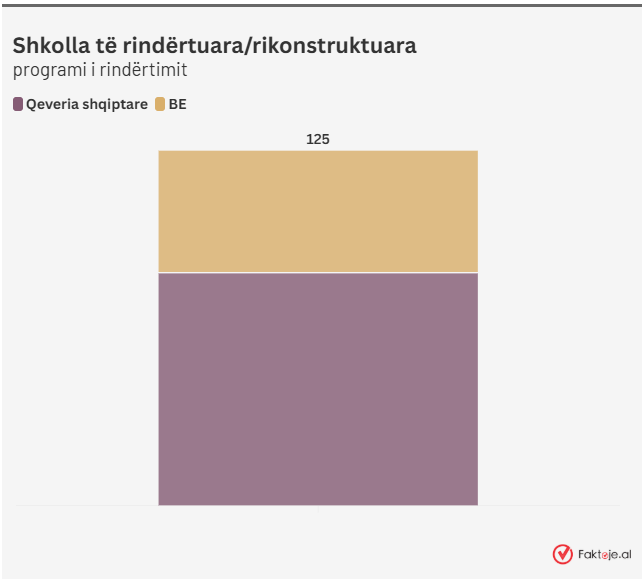
The only way to reach the figure of 450 that the Prime Minister mentioned is if we generously count every intervention as evidence of ‘school construction,’ which reveals the electoral propaganda of the Prime Minister.
What about the students?
Another fact revealed by the Ministry of Education’s figures is that the number of students is in free fall.
In primary and general secondary education, from 501,693 students in the 2013-2014 school year, by the 2022-2023 year, there were only 267,275 students. The number of students has nearly halved in 10 years.
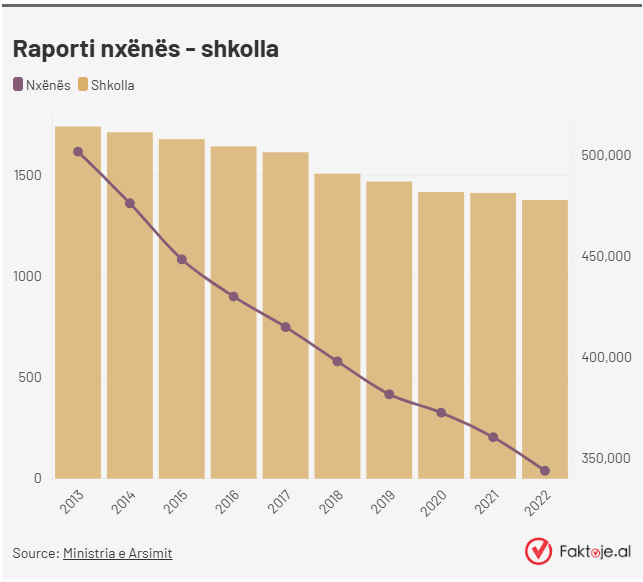
Conclusion
So, what does the figure 450 represent? More of a slogan, a number that sounds good on the podium, but not a documented reality, nor an achievement backed by facts.
In conclusion, the Prime Minister’s statement intentionally confuses maintenance with construction, necessity with initiative, and hope with concrete.
‘In the fourth term, this necklace will be supplemented with 200 new schools’, Prime Minister Rama promised in continuation of his statement. This remains to be seen but based on the data from the Ministry of Education itself, we will categorize Prime Minister Edi Rama’s statement that his government has built 450 schools as false.

